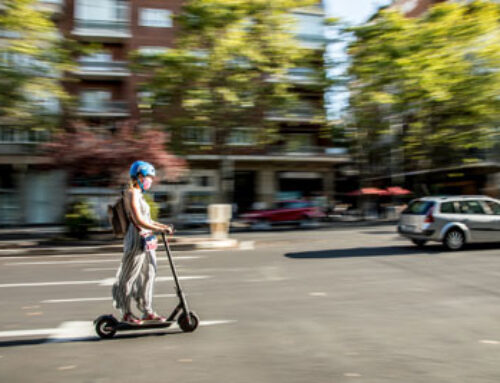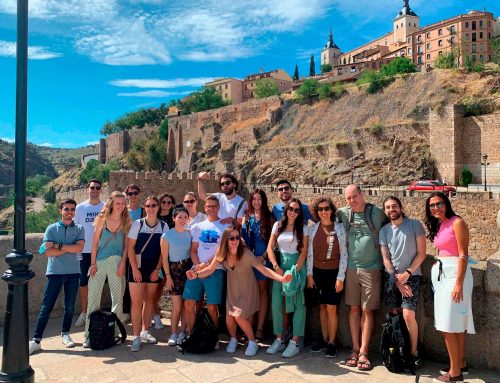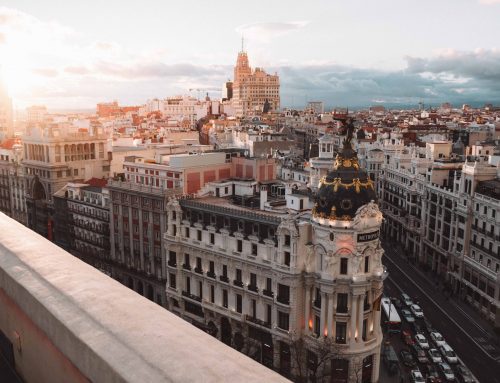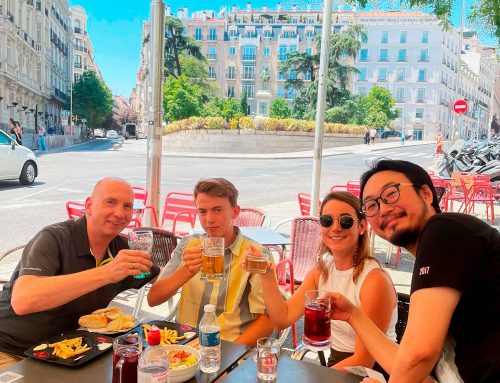Inhispania is situated in the heart of Madrid: across the road from the Metropolis building, at the end of Gran Vía (the famous shopping street), Palacio de Cibeles (the huge, white town hall), Sol (the busiest plaza in Madrid, the Prado (Art) Museum, and only a short walk from the beautiful Retiro Park.
The closest metro stations to Inhispania are Banco de España and Chueca, both of which are less than a 5 minute walk to the school.
There are many interesting buildings and structures near the school, all of which you have the opportunity to visit during our activities, so let’s discuss them!
+
1. The Metropolis Building
- Located on the corner of Calle Alcalá and Gran Vía, across the road from the school, stands the emblematic Metropolis building.
- It is one of the symbols of the area, featuring in thousands of tourist snap shots who photograph view of this avenue from Plaza de Cibeles.
- It was designed in 1905 by the French architects, father and son Jules and Raymond Février for the insurance company La Unión and el Fénix, although the final work was carried out by Luis Esteve from Spain.
- On the top of the state dome stands a statue of Victoria, which used to be a Phoenix, symbol of the insurance company that initially occupied the building.
- At the foot of the building, on the pavement, is a 3D stone map of Gran Vía, a small detail you might not have noticed before. These stone maps are very common and can be seen throughout Madrid’s city centre.
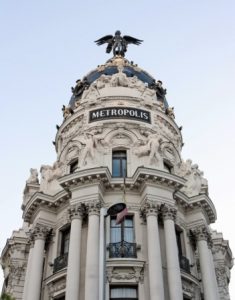
2. Eternal Flame
- Down the road from the school, next to Banco de España metro is a small black cauldron from the centre of which burns an “eternal” flame.
- It is located in front of the Palacio de Cibeles, on the islet located on Calle Alcalá in the direction of Puerta del Sol
- This permanent monument remembers all the victims of the pandemic caused by the Covid virus – 19.
- Inaugurated on May 15, 2020 during the San Isidro festival, the sculpture will serve as a tribute to those who died from the disease.
- Below the cauldron on a plaque, reads “Your flame will never go out in our hearts.”
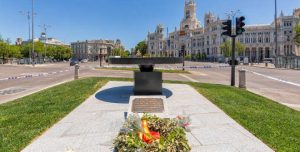
3. Fuente de Cibeles
- A 5 minute walk from Inhispania and just down the road from the “eternal flame” is the iconic Fountain of Cibeles, which lies in the centre of the Plaza de Cibeles, and opposite the Palacio de Ciebeles (Madrid’s town hall).
- Crowned by a mural crown, the goddess rides a chariot pulled by two lions, representing Atalanta and Hippomenes.
- The fountain is the site where Real Madrid’s supporters and players gather to celebrate the team’s trophies as well as partakers of the successes of the Spain national football team.
- Fun fact: The goddess lost a hand in 1994, following a celebration of a victory of the Spanish national team, and she lost it again on 21 September 2002 after further celebrations.
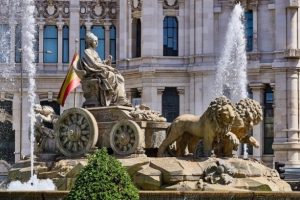
4. Fuente de Neptuno
- Just down the road from the Cibeles Fountain, lies Neptune Fountain, one of the most beautiful and majestic fountains in Madrid, which also serves as a roundabout for cars (like the Fuente de Cibeles).
- Both gods occupy prominent positions within Greek mythological hierarchy and are rivals on the sports field, since the followers of Atlético de Madrid celebrate their victories in the square that plays tribute to the god of the sea (while those of Real Madrid do so in the Plaza de la Cibeles).
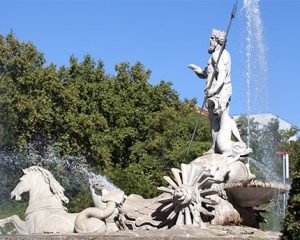
5. Gran Vía
- At the end of the road, a 30 second walk away from the school, is Gran Vía.
- Sometimes referred to as the “Spanish Broadway”, it is one of the city’s most important shopping areas, with a large number of hotels and large movie theatres, although since 2000s, many of these theatres have been replaced by shopping centres.
- In the mid-19th century, Madrid’s urban planners decided that a new thoroughfare should be created, connecting the Calle de Alcalá with the Plaza de España. This large project meant that many buildings had to be demolished, and before construction even began the media were quick to ridicule the plan by calling it “Gran Vía” or “Big Way,” as they believed it would “destroy” the heart of the city centre. The project however was approved in 1904, and finally completed in 1929, and would soon become the most important street in the whole of Madrid.
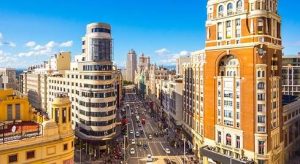
6. Telefonica building
- A 5 minute walk away from the school also stands The Telefonica building, which was the first European skyscraper
- It was built between 1926 and 1929 for the Spanish telecommunications company, and was the tallest building in Madrid at the time
- During the Spanish Civil Warit was used as an observatory by the Republican forces to watch the whereabouts of Francoist troops. This reason, and the fact of being the Office of Foreign Press, made it a target of bombings during the war.
- Now, however, it is a fascinating Telecommunications and art Museum as well as an auditorium.
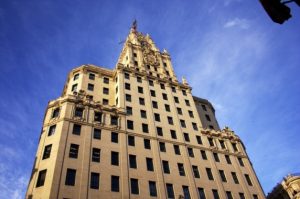
Check out this video below to see where Inhispania is located!!!!






